Blog
Christmas, Thanksgiving, or Easter? How to Tell Which Holiday Cactus You Have
Ever looked at your blooming cactus and thought, “Wait… is this a Christmas cactus, or maybe Thanksgiving? Could it be Easter?” You’re not alone. Thousands of home gardeners in the U.S. get confused every year trying to tell their holiday cactus types apart. And the truth is: it matters. Knowing which holiday cactus you have means you can give it the right care, encourage seasonal blooming, and avoid the frustration of a cactus that just won’t flower when expected.
I’ve spent over a decade growing, studying, and sometimes even misidentifying holiday cacti, so I completely understand the confusion. But here’s the good news: once you know what to look for, telling them apart becomes second nature. In this guide, I’ll walk you through simple identification tricks, blooming secrets, and care tips that work in real-life conditions—especially if you’re a passionate, hands-on gardener like me.
Why It’s Important to Know Your Holiday Cactus
Identifying your holiday cactus isn’t just for fun – it helps you care for it better.
Each species (or hybrid) of holiday cactus has unique blooming cycles and slightly different care needs. If your Thanksgiving cactus is being treated like an Easter cactus, you could be overwatering or missing its blooming window entirely.
Plus, when you know your cactus type, it’s easier to:
-
Propagate it at the right time
-
Adjust lighting and humidity needs
-
Time its blooming to match holidays naturally
-
Avoid unnecessary repotting or stress during its rest cycle
Think of it like knowing your pet’s breed—you just care for it more confidently.
The Big 3: Types of Holiday Cactus Explained
Thanksgiving Cactus (Schlumbergera truncata)
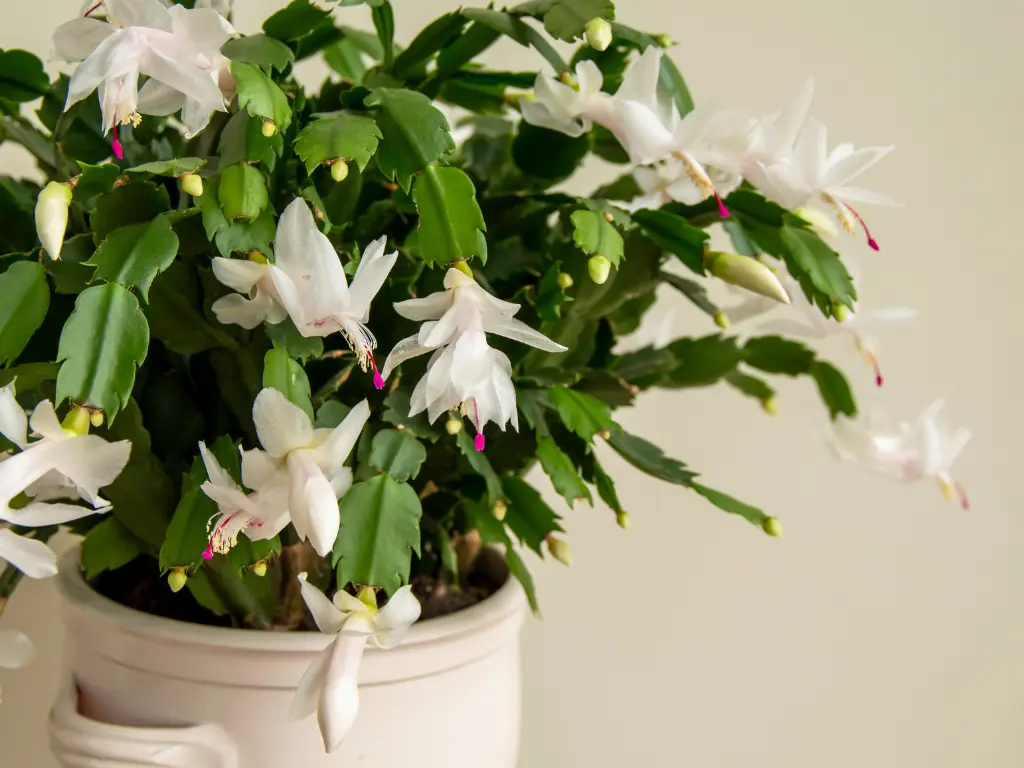
Also called the “crab claw cactus,” this variety is often the one people mistake for the Christmas cactus. It has pointed, claw-like leaf segments, and if you’ve bought a holiday cactus in the fall from a big box store—it’s probably this one.
Key traits:
-
Pointy leaf edges with small hooks
-
Upright growth pattern
-
Blooms: mid-to-late November
-
Common in U.S. nurseries around fall
This cactus is a vigorous grower and blooms just in time for Thanksgiving, which makes it a seasonal favorite. Its flowers come in bright pinks, reds, purples, and even peach or yellow tones.
Christmas Cactus (Schlumbergera bridgesii)
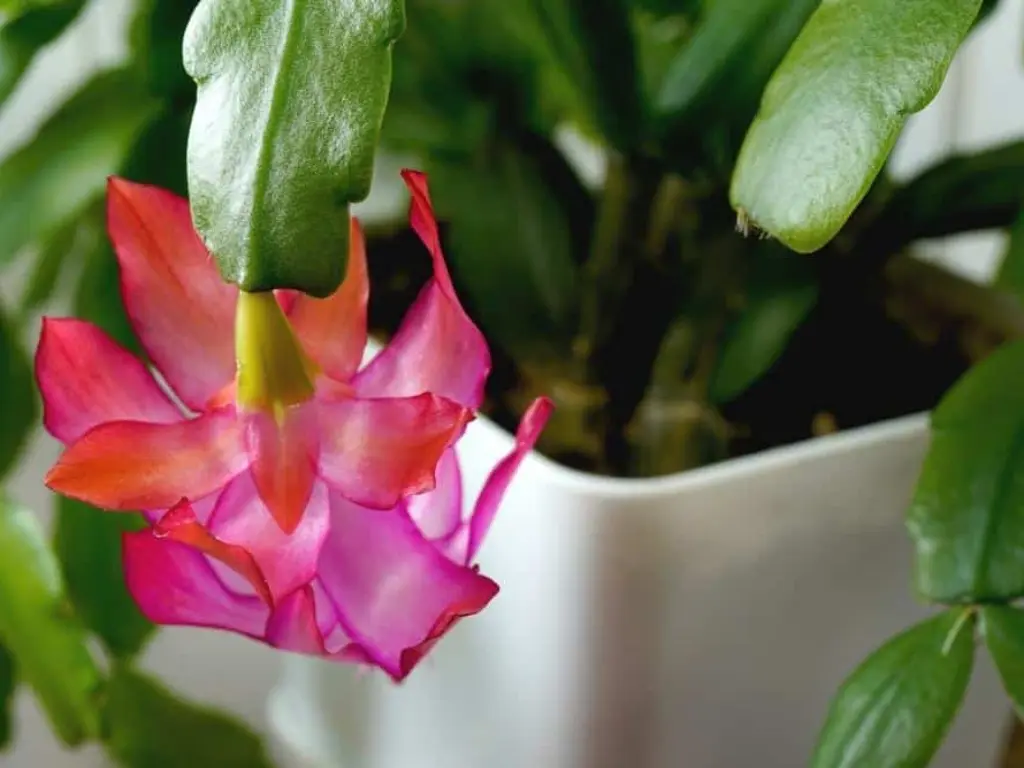
The true Christmas cactus is a bit more laid-back. You’ll notice its leaf segments are smoother, with rounded scallops instead of sharp points. It blooms closer to the holidays, usually from mid-December to early January.
Key traits:
-
Leaf edges are smooth and round
-
More droopy stems compared to truncata
-
Blooms: December to early January
-
Flowers are pink, fuchsia, red, or white
These plants tend to trail more and look gorgeous in hanging baskets. They also have a slightly slower growth rate but make up for it with classic holiday charm.
Easter Cactus (Rhipsalidopsis gaertneri)
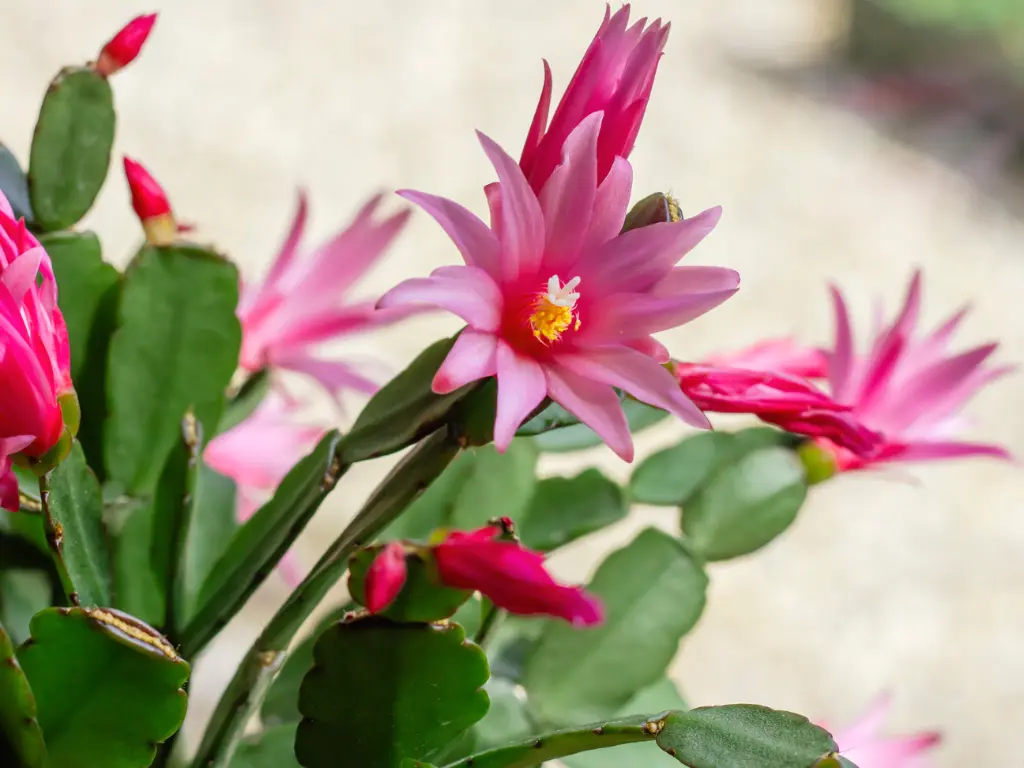
The least known but no less beautiful, the Easter cactus brings color to your spring windowsills. It has thicker, rounder leaf pads and stunning starburst-shaped blooms.
Key traits:
-
Rounded leaf pads with tiny bristles at the edges
-
Blooms in spring (March–May)
-
Needs more dry rest in winter
Its care needs are just a tad different from the others. Easter cacti like a distinct rest period in winter, and they thrive when given a break from frequent watering.
Quick Visual Identification Guide

Still unsure? Let’s break it down with a simple chart to help you spot the differences fast:
| Cactus Type | Leaf Shape | Bloom Time | Common Colors |
|---|---|---|---|
| Thanksgiving | Pointed claws | November | Red, orange, pink |
| Christmas | Rounded scallops | December | Red, white, pink |
| Easter | Thick rounded pads | March–May | Red, purple, white |
Keep this table handy next time you’re trying to ID your cactus!
How to Encourage Blooming for Each Type
Let’s talk results—getting your cactus to bloom isn’t just about watering it less. Here’s how you can nudge your cactus to put on a show:
Thanksgiving & Christmas cactus:
-
Likes bright indirect light
-
Needs about 12–14 hours of uninterrupted darkness for 6 weeks prior to blooming
-
Cool nighttime temperatures (around 55–60°F) help too
-
Begin reducing watering in early fall
Easter cactus:
-
Needs more rest during winter—think of it like a nap it absolutely needs
-
Reduce watering drastically from November through February
-
Resume watering and increase light exposure in March to kickstart blooms
Pro tip: If you’re growing all three, use sticky notes or tags to track their bloom cycles. It’s easy to mix them up in a big collection.
Holiday Cactus Care Tips (All Types)
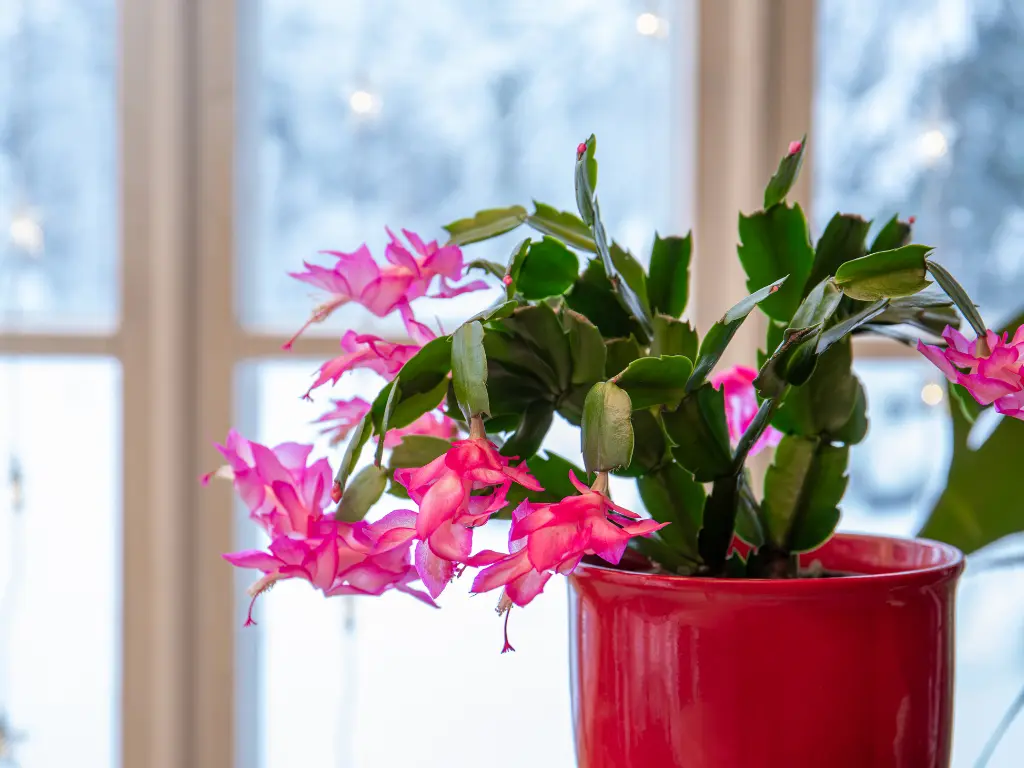
These tips work across the board and will help keep your cactus happy and healthy year-round:
-
Use well-draining soil (look for cactus or orchid blends)
-
Avoid letting roots sit in water—drain trays after watering
-
Mist occasionally to maintain humidity, especially during dry winters
-
Ideal temps: 60–70°F for flower buds to form
-
Fertilize lightly in spring and summer with a balanced, diluted fertilizer
Can You Own More Than One Type?
Absolutely – and it’s one of the best ways to enjoy year-round color without constantly rotating plants. I have one that starts blooming before Thanksgiving and another that keeps going until Easter. It’s a parade of blooms that lifts the spirit all winter long.
Some growers even create mixed containers. Just remember: their care needs overlap, but their dormancy timing might differ slightly.
Final Tips Before You Label It
If you’re still scratching your head, try this:
-
Track bloom dates for one full year
-
Compare leaf shape and texture up close
-
Ask a local nursery expert—they’ve seen it all
-
Avoid relying solely on plant ID apps—they often mix up hybrids
And don’t be too hard on yourself. Even experienced gardeners (like me!) get it wrong sometimes.
Frequently Asked Questions (FAQs)
1. How do I tell the difference between Christmas cactus and Thanksgiving cactus?
Look at the leaf edges: Thanksgiving cactus has pointy hooks, while Christmas cactus leaves are more rounded and scalloped.
2. Will my cactus bloom every year?
Yes – as long as it gets the right rest period and light conditions. These plants are surprisingly dependable.
3. Can I force my cactus to bloom?
You can encourage blooming by simulating shorter days and cooler nights for about 6 weeks before the expected bloom season.
4. Does it matter what soil I use?
Absolutely. Dense or compact soil retains too much moisture, which can lead to root rot. Use a light, airy mix that drains fast.
Conclusion
Whether it’s a Christmas, Thanksgiving, or Easter cactus, each plant has its own seasonal charm. And once you know what you’re working with, you can unlock consistent blooming year after year.
Take time to observe your plant. Note when it blooms, how it grows, and how the leaves feel. That alone puts you ahead of most cactus owners.
Your cactus deserves to shine – and now, you know how to make it happen. Happy growing!
You may like:

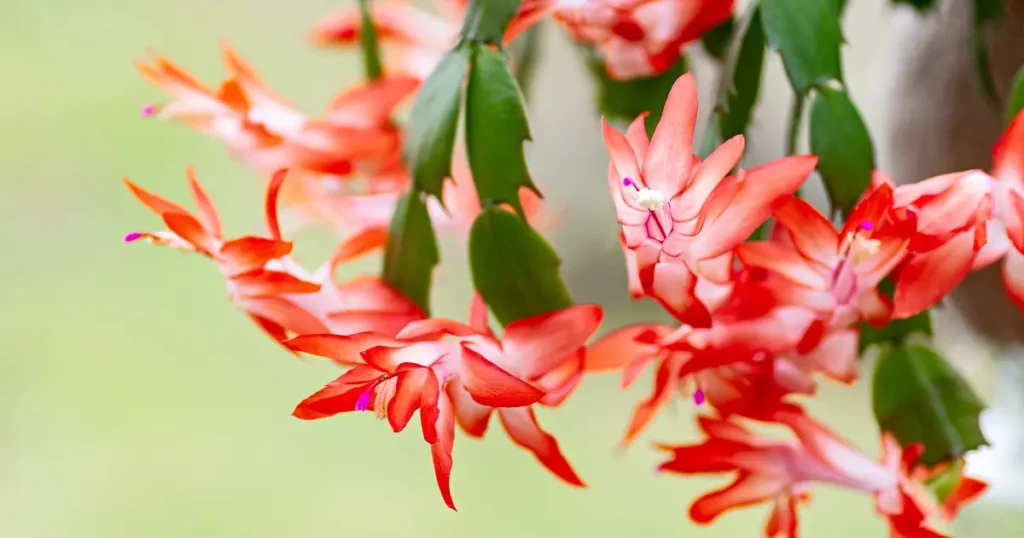
7 Vegetables to Plant in December for a Bountiful Winter Harvest
Winter gardening is a challenge many new gardeners shy away from. But if you’re among [...]
Dec
9 Common Christmas Cactus Problems and How to Fix Them
Have you ever walked past your Christmas cactus and wondered why it suddenly looks sad? [...]
Nov
Swedish Ivy Care: How to Grow a Healthy, Thriving Plant
Have you ever looked at your Swedish Ivy and wondered why the leaves are turning [...]
Nov
Avoid These 10 Garlic Planting Mistakes for Bigger, Healthier Bulbs
Growing garlic at home is one of the most satisfying things a gardener can do [...]
Nov
How to Prevent Christmas Cactus Bud Drop: Tips for a Healthy Bloom
Have you ever noticed your beautiful Christmas cactus (Schlumbergera) starting to lose its buds just [...]
Nov
Discover 7 Stunning Types of Night-Blooming Cereus
Have you ever waited for a flower that only opens at night and then disappears [...]
Nov